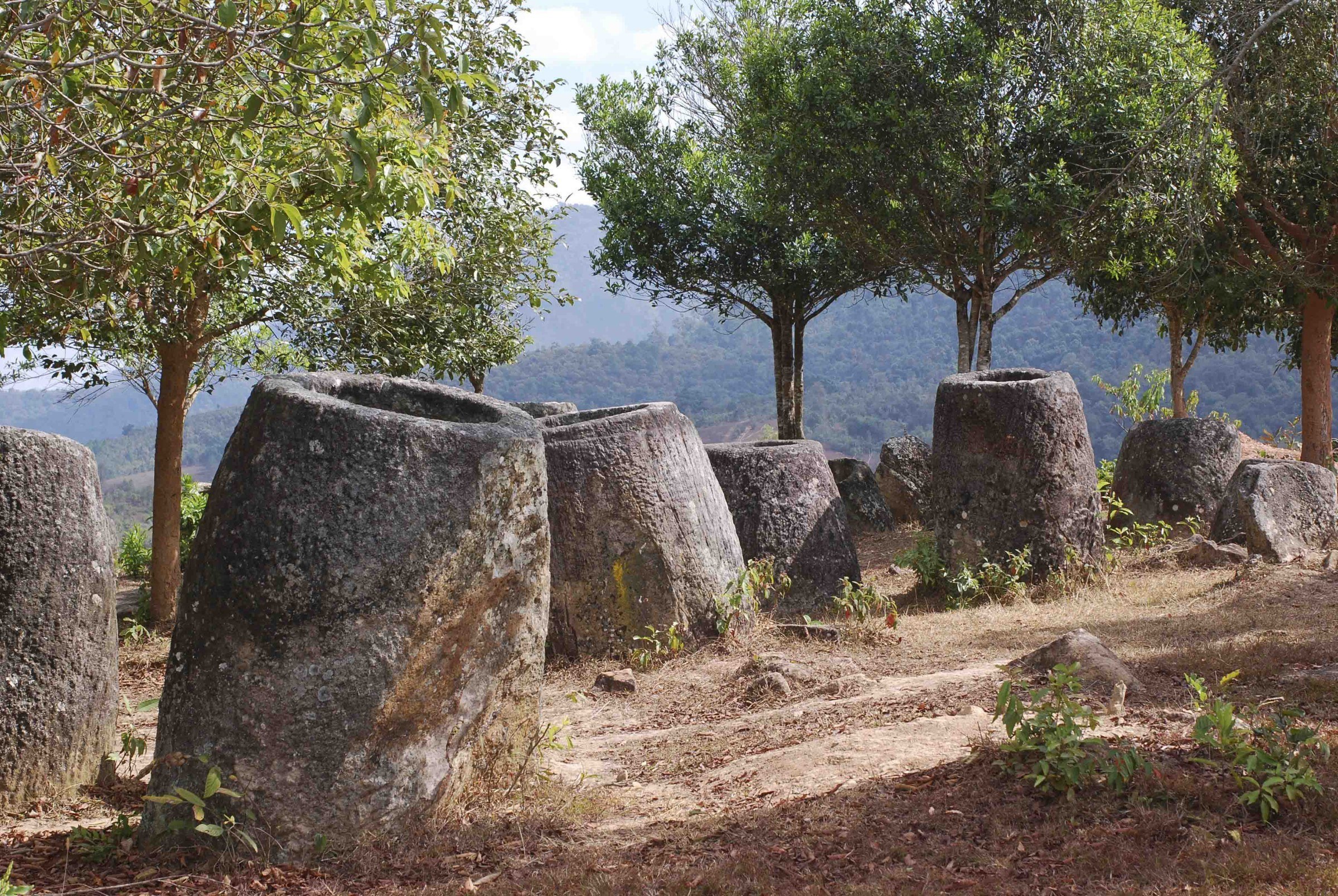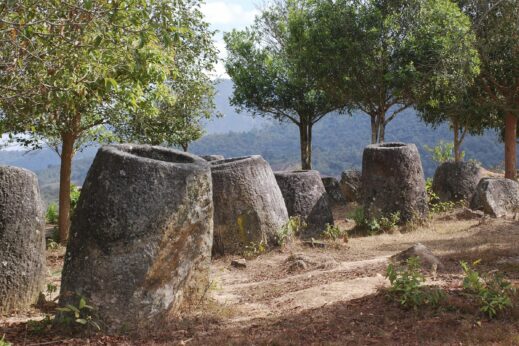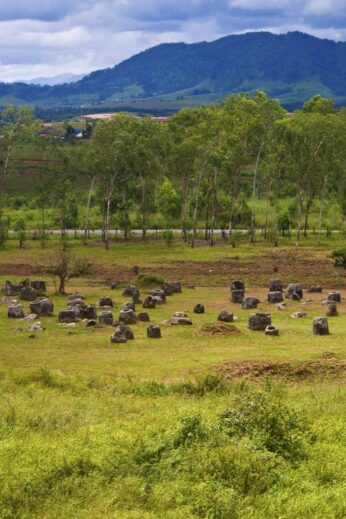In the third of our series on Southeast Asia’s archaeological wonders, we take you to Laos’ Plain of Jars: a mystery over 2,000 years old.
Where? On the Xieng Khouang plateau in central Laos, about 250 km southeast of Luang Prabang and about 350 km north of the capital, Vientiane.
What? That’s the big question! Superficially, the Plain of Jars is what it says on the tin: a vast area scattered with huge, stone jars. What these jars were built for, exactly, nobody knows – although evidence supports the theory that they were a sort of prehistoric tomb.
When were they built? It’s thought that the jars were built during the Iron Age, from 500 BC – 200 AD, however the archaeologist Eiji Nitta has suggested that they could have been built as early as the second millennium BC.
How big are they? There are more than 90 jar sites scattered across hundreds of square kilometres, each containing from one to 400 jars. The jars themselves vary in height and diameter from one metre to three metres, and in total there are around 2,500 jars and jar fragments remaining in the region.
Who built them, and why? It is this mystery that makes Laos’ Plain of Jars so compelling and fascinating. Since research first began in the early 1930s, archaeologists and historians have never managed to agree on which prehistoric civilisation was responsible for these megaliths, nor their purpose – although many theories have been advanced.
What are they?
The jars are all hewn from rock (usually sandstone), in a cylindrical shape with the bottom always wider than the top. Of all the thousands of jars in the area, only one bears decoration of any kind: a crouching human form carved in bas-relief on the exterior.
Most of the jars have lip rims, suggesting that all of them had lids at some point. The fact that only a few stone lids have ever been found (and none of them actually on top of a jar) indicates that most of the lids must have been made from perishable materials such as wood.
Who built them?
Though the date of the jars’ construction is thought to have been during the Southeast Asian Iron Age (500 BC-200 AD), little is known about the prehistoric peoples who called Laos home at that time. Some archaeologists (Eiji Nitta, for example) believe that the sites are much older, dating back as far as the second millennium BC.
The civilisation responsible for the Plain of Jars probably used iron tools to craft its jars, and beads and bronze objects foreign to the area have been found – suggesting that it was a wealthy society that profited from its position on trade routes between China, Vietnam and the south.
What were they for?
The first archaeologists to study the Plain of Jars in the 1930s believed that they played a part in prehistoric burial practices, and what little evidence has been found around the jars does seem to support this theory. Human remains, beads, iron and bronze objects, and ceramics have been found inside and around the jars – some of them burnt, which suggests the practice of cremation. There are also several burial sites found near the jars, marked by stone discs, which may have been contemporary with the jars and connected to them in some way.
Local legends have many more interesting explanations for the existence of the Plain of Jars, however. One such story tells that the area was once home to a race of giants, whose king, Khun Cheung, had the jars constructed to brew rice wine to celebrate victory over his enemies. Another story claims that the jars were made from natural materials such as clay, sand, sugar and animal products before being fired in a giant kiln built inside a cave.
Yet another tradition holds that the jars were constructed to gather monsoon rainwater to supply locals and travellers in areas where fresh water was not readily available. This explanation is more creditable than the race of giants – and could even account for the presence of beads and other objects inside the jars, as travellers could have placed them inside as offerings to bring rainfall.
US bombing & present condition
During the Vietnam War, central Laos was subject to one of the most intensive carpet bombing campaigns in history. Between 1964 and 1973, the USA dropped more bombs on the Plain of Jars than they did in the whole of WWII, and as many of 80 million of these remained unexploded after impact.
Though the Plain of Jars is not a UNESCO World Heritage Site, the Lao government and UNESCO have worked together in recent years to clear these unexploded bombs. Nevertheless, many still remain and continue to provide a very real threat for locals and visitors to the area. Laos is considering putting the region up for World Heritage status, which would provide funds for further clearing, making way in turn for research efforts and tourism.
For now, the continued presence of unexploded bombs means you must be very careful to remain within designated viewing areas when visiting any of the jar sites.
Visiting the Plain of Jars
Phonsavan is the gateway to the Plain of Jars, and can be reached by aeroplane, car or bus. A bus from Vietiane to Phonsavan takes around 10-12 hours, and from either Vang Vieng or Luang Prabang takes around 8 hours.
The most visited sites are sites one, two and three, and these can be reached by motorbike or car. There are also lots of agents in Phonsavan who arrange tours of the three sites, as well as some other local sites of note – such as Hmong villages. Alternatively, you could hire a bicycle and make the 45-minute ride to site one – the most impressive of the three sites.
Entrance to each of the jar sites is 10,000 Kip (80p).
Take a look at the ‘Northern Laos Explorer’ tailored trip which will take you to this impressive and mysterious site.






